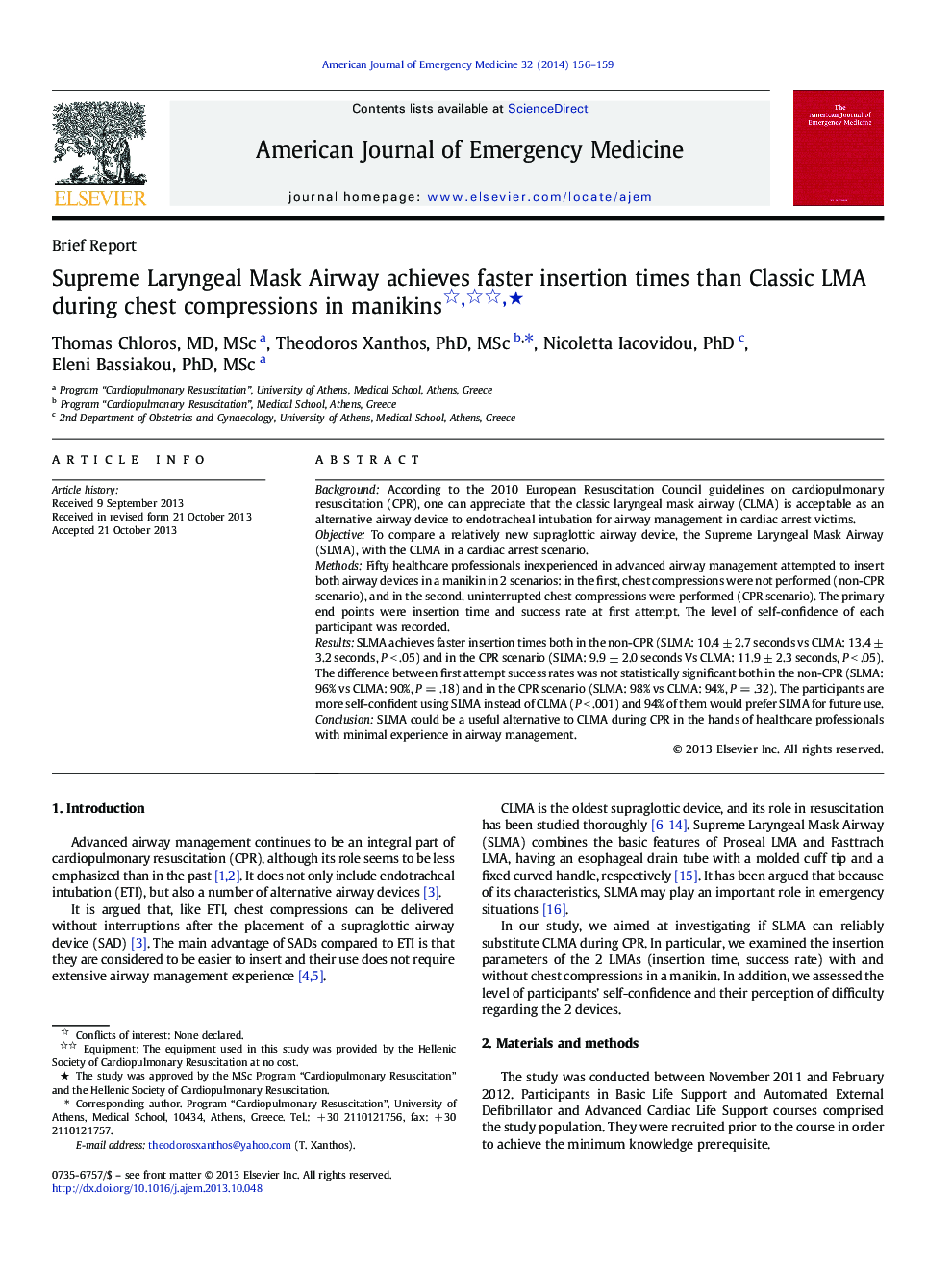| Article ID | Journal | Published Year | Pages | File Type |
|---|---|---|---|---|
| 3223367 | The American Journal of Emergency Medicine | 2014 | 4 Pages |
BackgroundAccording to the 2010 European Resuscitation Council guidelines on cardiopulmonary resuscitation (CPR), one can appreciate that the classic laryngeal mask airway (CLMA) is acceptable as an alternative airway device to endotracheal intubation for airway management in cardiac arrest victims.ObjectiveTo compare a relatively new supraglottic airway device, the Supreme Laryngeal Mask Airway (SLMA), with the CLMA in a cardiac arrest scenario.MethodsFifty healthcare professionals inexperienced in advanced airway management attempted to insert both airway devices in a manikin in 2 scenarios: in the first, chest compressions were not performed (non-CPR scenario), and in the second, uninterrupted chest compressions were performed (CPR scenario). The primary end points were insertion time and success rate at first attempt. The level of self-confidence of each participant was recorded.ResultsSLMA achieves faster insertion times both in the non-CPR (SLMA: 10.4 ± 2.7 seconds vs CLMA: 13.4 ± 3.2 seconds, P < .05) and in the CPR scenario (SLMA: 9.9 ± 2.0 seconds Vs CLMA: 11.9 ± 2.3 seconds, P < .05). The difference between first attempt success rates was not statistically significant both in the non-CPR (SLMA: 96% vs CLMA: 90%, P = .18) and in the CPR scenario (SLMA: 98% vs CLMA: 94%, P = .32). The participants are more self-confident using SLMA instead of CLMA (P < .001) and 94% of them would prefer SLMA for future use.ConclusionSLMA could be a useful alternative to CLMA during CPR in the hands of healthcare professionals with minimal experience in airway management.
